This article is part of the 31 Days of Pinterest Hacks series. Find the main page for this series here.
When we think about school and the classroom, it’s easy to envision children sitting at their desks harping away on workbook sheet after workbook sheet. Filling in blanks, matching images, tracing letters, and circling answers make great-looking educational handouts.
It’s also easy to find free printable worksheets on Pinterest. It’s even easier to print them and give them to neurodivergent and disabled children. This article is going to trigger some reactions in you. I explain why worksheets need to be kept to a minimum and offer alternatives so you can cultivate rich learning experiences with and for children.
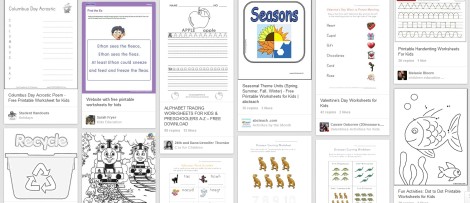
Worksheets, worksheets, worksheets! You can download a worksheet for just about anything on Pinterest.
Why worksheets may be a challenge for neurodivergent or disabled children
- Children requiring fine motor support find holding a pencil and filling out sheets difficult.
- Worksheets are symbolic activities that are difficult for children who are concrete thinkers.
- Children requiring support with visual tracking or eye-hand coordination will find worksheets challenging.
- Children requiring reading support may not be able to complete a worksheet as it requires the skill of following directions.
- Children who are easily distracted will most likely struggle with staying focused on worksheets.
A word about worksheets
I’m going to be honest about this one. As a teacher, I found it all too easy to print off copies for a class of 27 children. While I worked with one student, the rest of the class was busy completing work in their workbook. I believe worksheets to be just that—busy work. They make great fillers for extra practice but not front-line, honest-to-goodness hands-on learning experiences—even if children use their hands to fill them in.
That said, I know that used properly, worksheets can be lifesavers.
Further, when modified, some worksheets can be very much hands-on (I explain below).
If you use worksheets, keep them to a minimum. Use them to compliment learning, but never as a first-time learning tool.
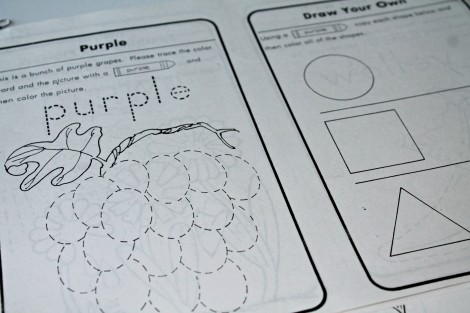
If you’re going to teach colors, work with colors, touch colors, and play with colorful fabrics. Tracing the names of colors and then coloring in worksheets offer very little value to a child. Keep these types of worksheets for when you need to keep a child busy.
Always ask yourself when planning a learning activity: How similar is this to real life?
If you’re not convinced, ask yourself these questions: How often do I pull out a worksheet to practice something new? When I learned to knit, did I use a worksheet before picking up the needles? When I learned to cook, did I fill out worksheet pages before cutting up the ingredients? When I discovered the social skills for dining at a restaurant, did I fill out worksheets to prepare for the experience?
Suggestions for alternatives to worksheets
- The opposite of busy work is hands-on. If you offer a child opportunities to discover, manipulate, and question the materials of their world, you will see authentic learning. You don’t need proof on a blackline paper to know that a child is acquiring new skills and knowledge. When planning an activity, think about how you can make it as hands-on as possible.
- Offer choices. Worksheets offer no choice at all. The directions are given, and the child is expected to follow them. But, with hands-on projects and activities, children can be given choices. E.g., “Do you want to create a graph or draw a picture of your science results?”
- Use worksheets with manipulatives. Worksheets can be great recording tools when used alongside manipulatives. If the child is learning to add, you can use manipulative tools to help solve the equation. If learning about “more” and “less,” use manipulatives to go along with the problem. You don’t need to purchase fancy manipulatives. Use blocks, toys, and utensils you already have available.
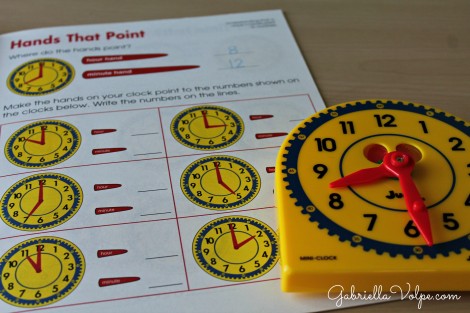
This type of worksheet is excellent because the child is expected to model the time on the clock, then record the time on the sheet.

These are all interactive worksheets. They can be laminated and used with manipulatives for a long time.
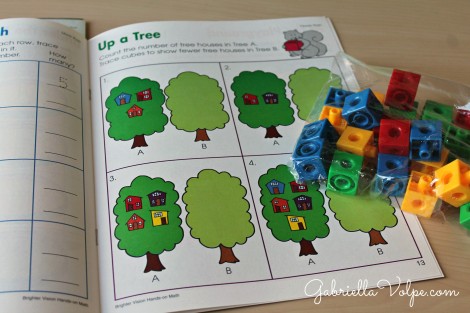
Another interactive worksheet that uses linking cubes.
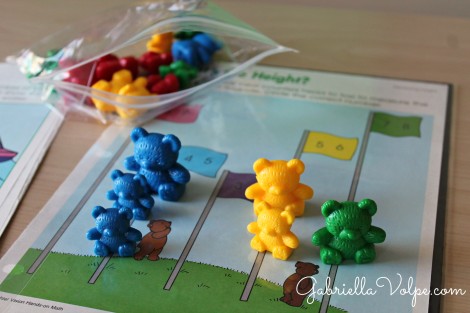
Interactive worksheets and sorting bears.
- Make learning as true-to-life as possible. If you’re going to teach colors, work with colors, touch colors, and play with colorful fabrics. Tracing the names of colors and then coloring in booklets full of color worksheets offer very little value to a child. Keep those worksheets for when you need to keep a child busy.
- Incorporate the child’s dominant intelligence and learning style into an activity. If the child is a kinesthetic learner, let them move and dance in the shapes they are learning. If the child is a visual learner, allow them to take photographs of shapes they find. If the child is “music smart,” let them compose a short tune describing the shapes. By building on a child’s learning style and including some new approaches from the other categories, you will most likely target some therapy goals simultaneously. Kinesthetic learning tips are wonderful for reinforcing physio, while verbal-linguistic tips will help include speech and language objectives. Learn more about dominant intelligences and learning styles here.
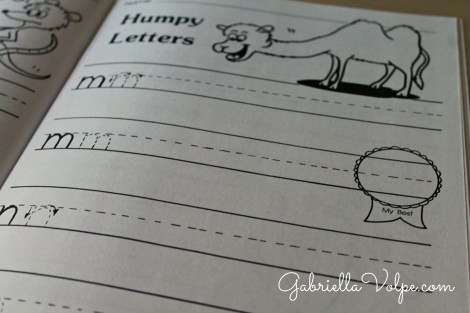
Printing or handwriting worksheets are just about the only types of worksheets I encourage you to use only after using more hands-on methods first. Draw the letters in the air, in the sand, and in play dough before ever committing to worksheets.
Do you use worksheets? How do you make the best use of them?
If you enjoy the tips in this series, I can help personalize strategies through private consultations.

I use worksheets occasionally with my special needs child. He REALLY wants to be able to write his name, so right now, we use some very basic dot to dots, tracing pages (curves, zigzags, and lines), and toddler mazes to work on wrist/elbow movement and hand/eye coordination. In general, I agree with your assessment of worksheets as busy work. I try to use them only when they motivate or excite my son.
That’s actually super, Catherine. You are using the worksheets in the way they should be used. As writing practice, this is the only way to go – after practicing and really internalizing the letters with his body. It’s clear that your son is motivated to write, so he’s definitely ready to use a pen/pencil and trace. I just worry about workbooks that are completed from beginning to end without other methods being offered first. Thank you for sharing this and keep working at it. Sounds like great things are going on over there!
I was told that some fonts on Microsoft Word (like Trace?- I need to check) allow you to type what you would like your child to trace over (ex. his name).
Does anybody know which fonts may work best for this purpose?
Chantal,
The best fonts are those in which the “a” is circular with a tail. There are many you can find, but here is a free trace font link for you: http://www.fontspace.com/category/trace